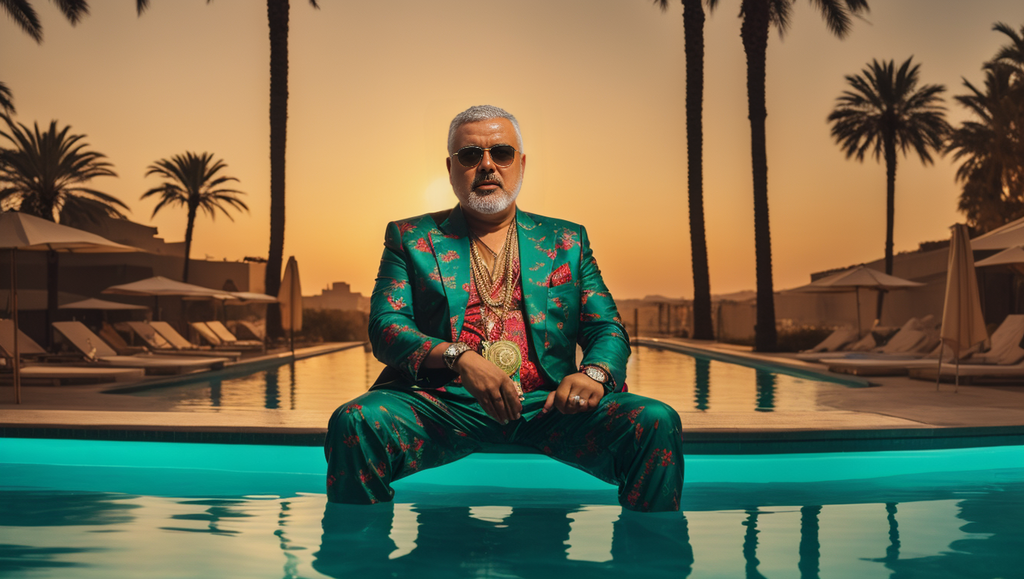Getting your Trinity Audio player ready...
The music video "Don't Cry Gaza," crafted through artificial intelligence, satirically portrays Ismail Haniyeh, the leader of Hamas's political bureau residing in Qatar, flaunting a lavish lifestyle. Estimated to be worth $4 billion, Haniyeh is depicted in the video by AI artist Eddie Goldenberg as a rapper boasting about his affinity for champagne and caviar, in stark contrast to the hunger experienced by children in the Gaza Strip.
Read more:
In the video, an animated version of Haniyeh is depicted indulging in a life of opulence, complete with pedigree dogs, leaning against a high-end sports car, lounging in a jacuzzi fully clothed, and traveling in a limousine flanked by models. A scene shows him in a well-appointed living room, with a television broadcasting an image of Gaza residents stripped to their underwear during an IDF arrest, symbolizing the adverse impact his organization has had on the Palestinian people.
2 View gallery


Will the real Ismail Haniyeh please stand up?
(Photo: Screenshot from the music video)
Goldberg, speaking on ynet Live, shared his astonishment at the contrast between Haniyeh's extravagant lifestyle and the dire conditions in Gaza, saying, "The image of a billionaire lounging in Qatari villas while Gazans suffer greatly just astounded me. He strikes me as a rapper, living in excess. That's how the idea came about. While Israelis might appreciate this, the goal is also for Gazans and students at Columbia and Harvard to take notice."
Goldberg harnessed a suite of AI tools to bring the video to life. The lyrics were penned by the chatbot ChatGPT, the visuals were generated by Stable Diffusion, Runway's Gen-2 model transformed these images into a video sequence, and WAV2LIP software synchronized the lip movements with the lyrics. The entire production came with a modest price tag of just 25 dollars.
Goldberg notes that the project took 20 to 30 hours to complete, all from the comfort of his chair, without the need for any on-set crew, intricate lighting, or photographers. "It's just me in front of the computer, turning my creative vision into images and then into a video. We're living through an extraordinary era of technological and creative revolution, akin to the Renaissance or the invention of the camera, even if we're less aware of it."
2 View gallery


Displaced Gazans prepare a meal in their makeshift shelter
(Photo: Mohammed Abed / AFP)
He marvels at how AI empowers creators to manifest their conceptual ideas into tangible media. "The technology is advancing daily," Goldberg observes. "What I've done now was utterly unfeasible six or even three months ago. The development speed is breathtaking."
While the benefits of AI are evident, Goldberg acknowledges the potential downsides, such as the creation of misleading images that misrepresent the conflict in Gaza. He admits that AI can be used to fabricate news, but contends that misinformation is not new, citing historical examples like the Protocols of the Elders of Zion. "In today's world, we can't blindly trust voices, images, or videos, which demands more critical thinking from us. This technology gives us the power to tell stories; it's up to us to decide how to use it. I believe the technology itself isn't dangerous—it's the choices people make that determine whether it's used for good or ill."


